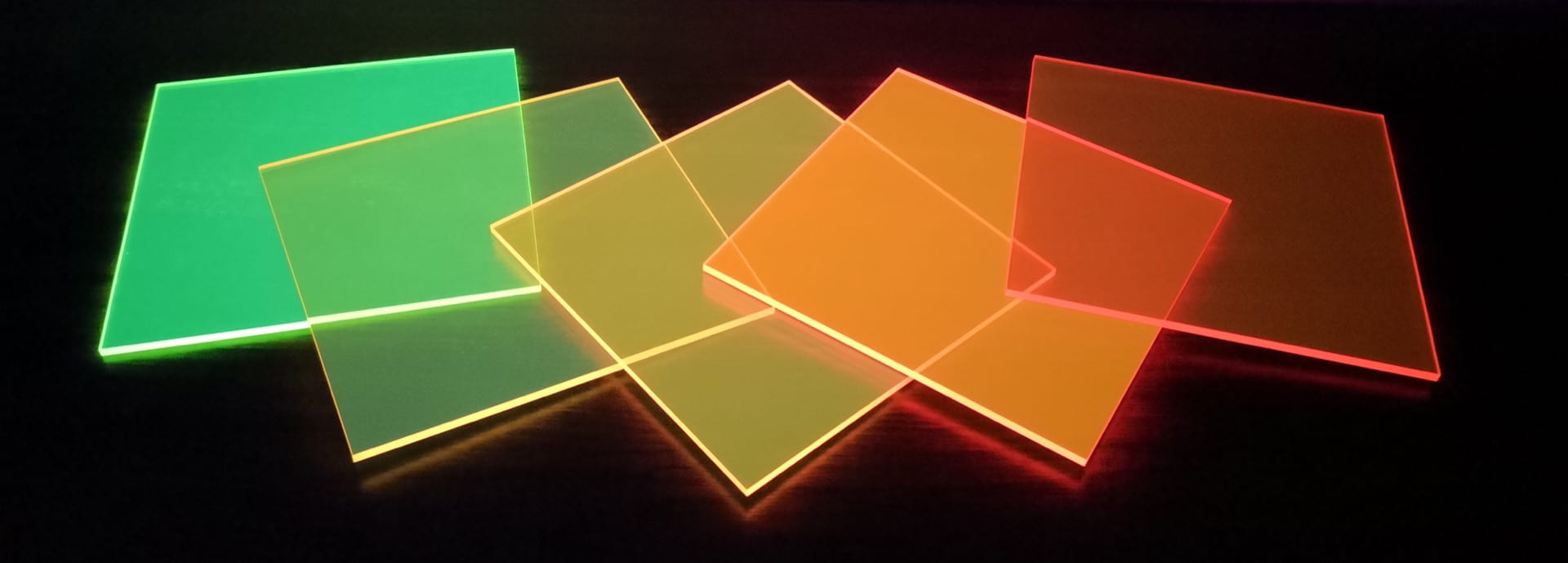An advancement to smart window technology incorporates luminescent solar concentrators (LSCs) into window or windowpane designs. A team from Rice University’s Brown School of Engineering designed its foot-square “windows” by placing a conjugated polymer between two clear acrylic panels. The impetus for the integrated photovoltaics technique stems from a “smart glass” competition, and aims to solve energy generation and efficiency issues that face building structures.
In the window architecture, the thin middle layer absorbs light in a specific wavelength and guides it to panel edges that are lined with solar cells. Conjugated polymers are specific chemical compounds that are tunable by certain chemical or physical properties, making them useful in a variety of applications, including as conductive films or sensors for biomedical devices.
In the Rice team’s design, the polymer layer serves as a waveguide, absorbing and emitting red light. By adjusting the molecular “ingredients” of the polymer compound, though, which is called PNV (poly[naphthalene-alt-vinylene]), the researchers made the layer absorb light in a variety of colors.

Rice University engineers designed and built windowpanes that redirect sunlight or illumination from indoors to edge-band solar cells. The central layer is a conjugated polymer that serves as a waveguide. Courtesy of Yilin Li.
As a waveguide, the layer accepted incoming light from any direction while restricting the way in which light passed through and exited, concentrating that light onto the solar cells where it converted to electricity.
Yilin Li, postdoctoral researcher and lead author on the study introducing the work, said that although solar rooftop structures are the mainstream solution for the generation and collection of electricity for buildings, those panels must orient toward the sun to achieve maximum efficiency. The new work, Li said, delivered colorful, transparent, and translucent panels that could be positioned about the outside of a building — and in a more visual appealing way.
Currently, team members reported, the windowpane architecture generated far less light than average, commercially available solar panels; those panels consistently convert about 20% of sunlight into electricity. Still, the LSC windows showed the ability in testing to recycle light from the interior of a structure, turning it into electricity outside of daylight hours.
Tests additionally showed that the LSC windows were more efficient at converting ambient light from LEDs than converting direct sunlight. Light from LEDs is about 100× weaker than direct sunlight.
“Even indoors, if you hold up a panel, you can see very strong photoluminescence on the edge,” Li said. The tested panels showed a power conversion efficiency of up to 2.9% in direct sunlight and 3.6% under ambient LED light.
Though research teams have introduced multiple distinct luminophore designs in the last decade, said Rafael Verduzco, an associate professor in Rice University’s Department of Chemical and Biomolecular Engineering, rarely have those designs incorporated conjugated polymers. An issue with using them for such an application involves their instability and possible degradation.
“But we have learned a lot about improving the stability of conjugated polymers in recent years, and in the future, we can engineer the polymers for both stability and desired optical properties,” he said.
The lab simulated the return of energy from panels as large as 120 inches square. The researchers reported that these panels would provide less energy, though still be able to contribute to a household’s needs.
Li said that the polymers, which can be printed into patterns within the panels, might also be tuned to convert energy from infrared and ultraviolet light. This would allow panels to remain transparent.
Contributing team members were from Rice University, the University of Houston, and the University of Cincinnati. The research was supported by Solera City Energy and was published in Polymer International (www.doi.org/10.1002/pi.6189).